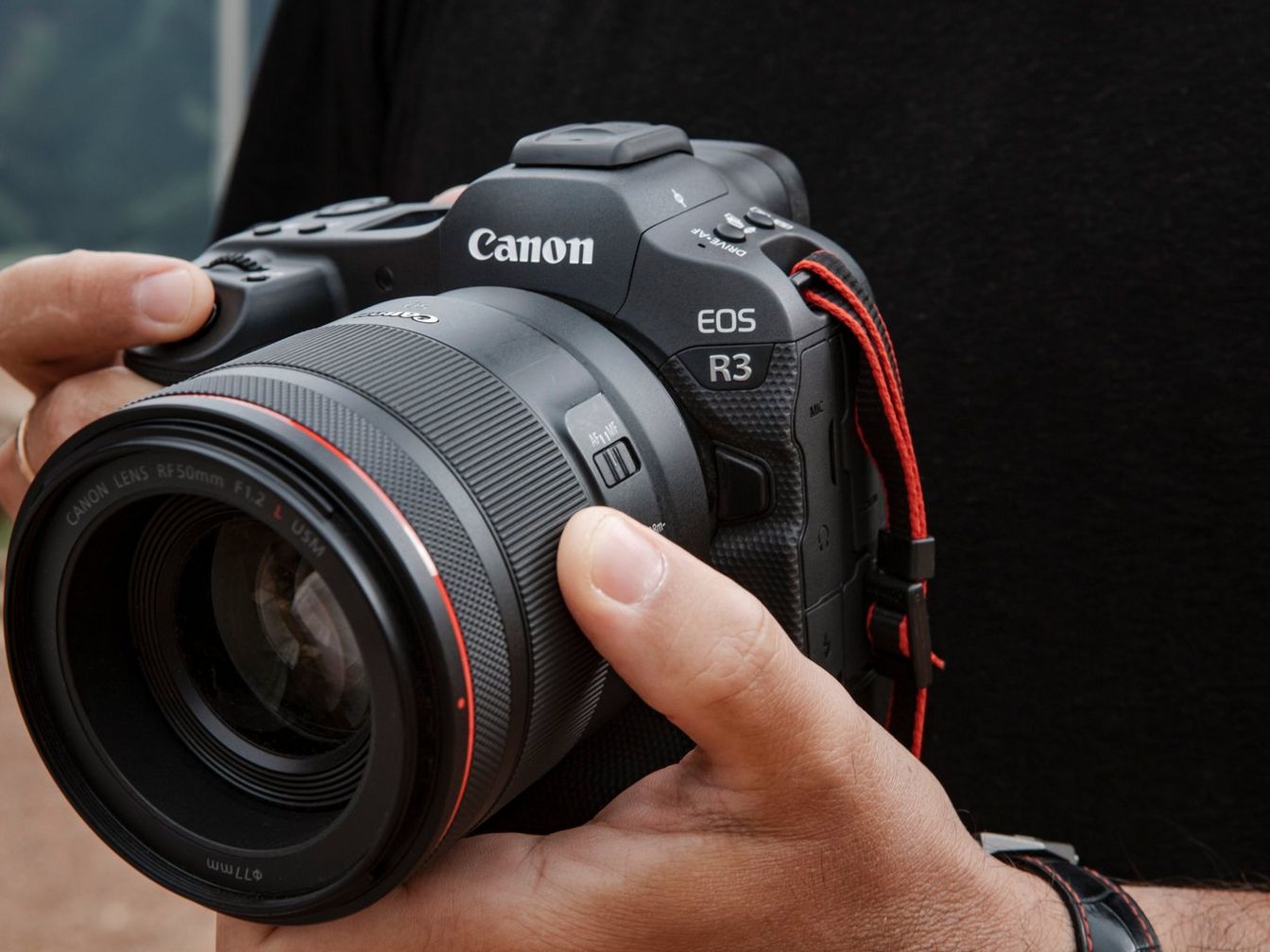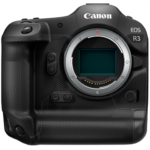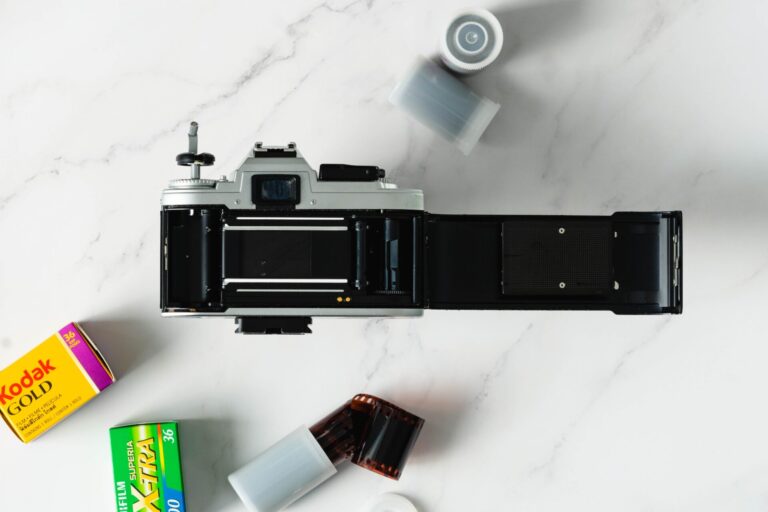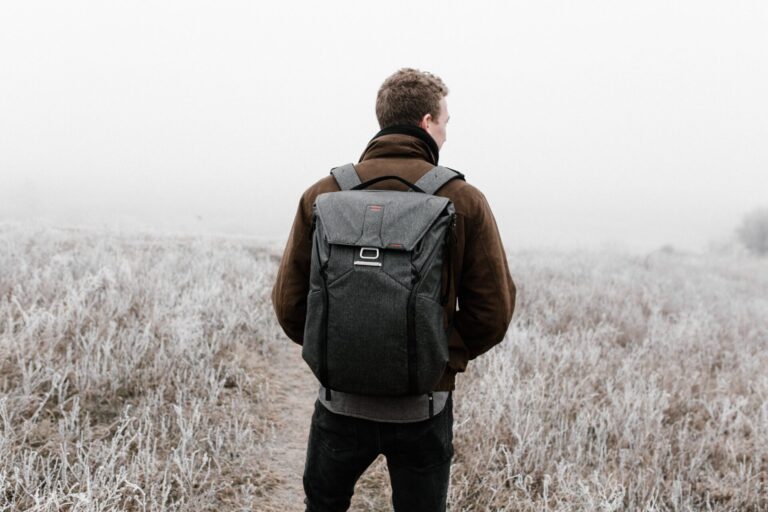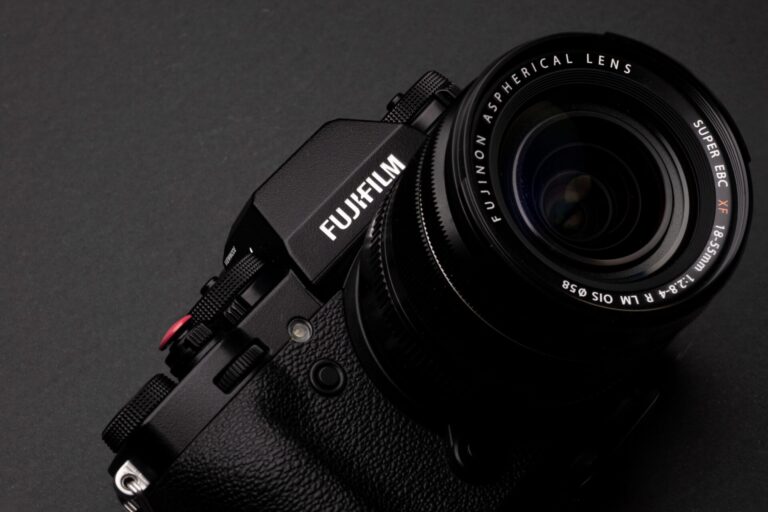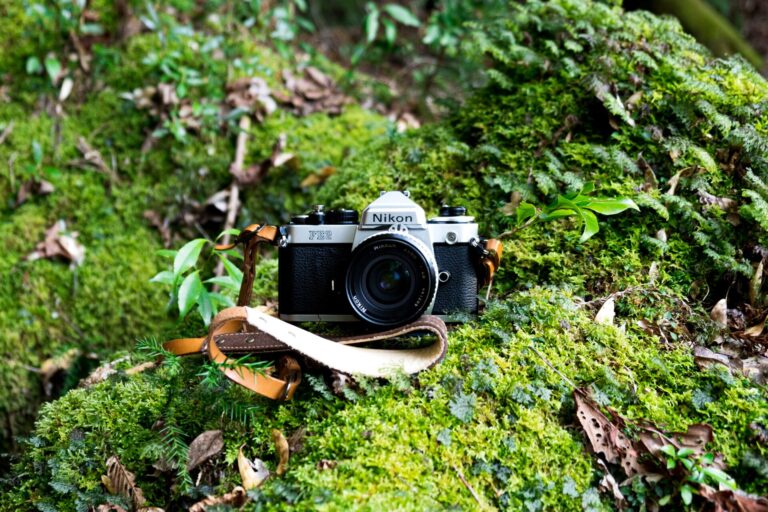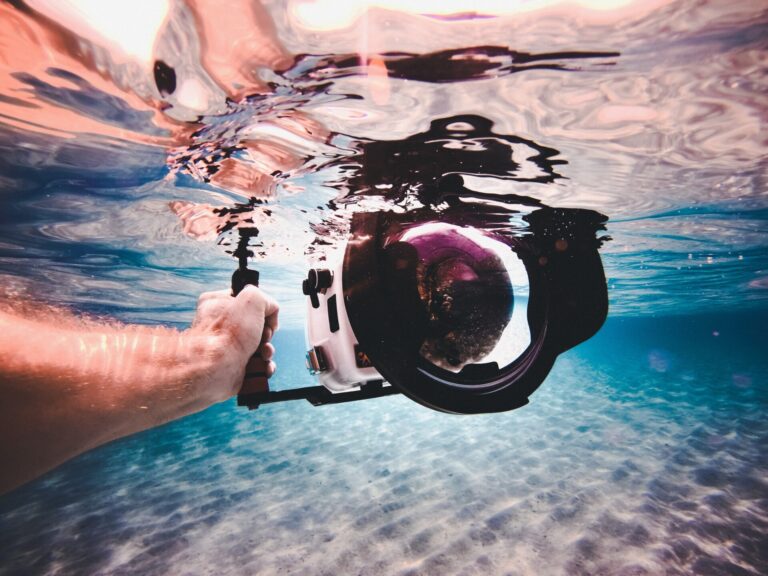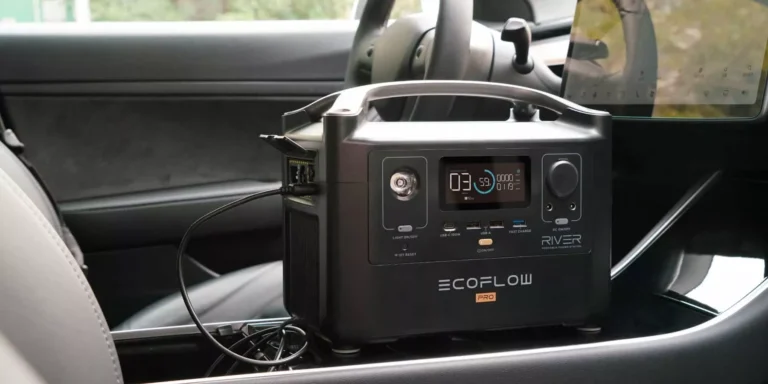Review: Should You Buy the Canon R3 for its Eye Tracking?
Canon R3
$ 5999,-Pros
- Amazing Autofocus Range
- Phenomenal Shutter Speed
- Impressive Eye Focus Tracking Technology
- Durable Camera
- Preforms Very Well Even Outside of Sports Settings
Cons
- Specialized enough to fall short in some places
- Expensive for an ALL-ROUNDER
- ‘NEW’ QoL features are standard in other company’s cameras.
When it comes to the world of Cameras, Canon has honestly struggled in the past few years. Though they’ve been putting out decent camera like the Canon EOS R5, competing companies like Sony and Fujifilm have been putting out products that have a wider audience appeal, and offer features that the Canon products don’t have. Which is why it was a pleasant surprise when we finally got our hands on Canon’s new R3.
Trust us, this thing is an absolute monster of a camera, but it might not be quite right for everyone. It’s going to come down to your specific needs, but if the R3 is what you’re looking for, prepare to be impressed.
Page Contents
Canon R3’s Unique Features
The new Canon R3 Pro has a lot of things going for it; lighting fast 30fps digital shutter, a laughably high maximum native 102,400 iso, and the ability to shoot in 6K at 60FPS. In most cameras, these three things would be the discussion points, but when it comes to something ‘unique’ for the Canon EOS R3 Pro, everyone is talking about how it handles focus.
The Canon R3 has 1053 AF points that you can use, but the way you control them is highly unique. Rather than just trusting the camera to track the subject, the Canon R3 actually scans your eye as you look through the viewfinder and allows you to auto-focus the target on what you’re looking at. If nothing else, the idea for the technology is simply wicked.
That said the tracking can have… mixed results. Though you can calibrate it for multiple users with preset (Thank goodness), the camera still reportedly has lackluster tracking with some users even after calibration (We didn’t run into this! But some people have), which makes it difficult to recommend the Canon R3 Pro based on the eye-tracking alone. The camera has many other things going for it, which we will cover here, but this technology is more of a bonus than a direct selling point.
Saying all of that, if Canon can improve upon their eye-tracking in future iterations of the EOS line, then this might end up as the future of autofocus. When it works, it REALLY works and makes it so the camera can keep up with your eyes.
Note: You can turn off this eye-tracking at any time and use a more traditional focus method, meaning that if the camera struggles to track your eyes, the camera is still 100% useable.
Canon R3’s Video Quality and Use
At this point, it’s critical to establish that the Canon R3 is generally a specialist’s tool. This camera is optimized to a needlepoint to handle sports and motorsport photography. Its autofocus is phenomenally fast and powerful, and this ensures that the video is always going to be in focus, but it also means that this camera is going to be a phenomenal amount of overkill, with specialization in the wrong places if you’re looking to shoot slower scenes like a vlog or a travel video.
That said, the actual quality of the video is astounding. The video quality on the R3’s best settings is, in all cases, comparable to the Canon R5, and smashes other cameras that we’ve reviewed on the site like the Sony A6100. The only thing that will end up standing above the Canon R3 are cameras that, like the R5, can shoot in 8k; that said, we haven’t seen many cameras that can record at that resolution for a reasonable amount of time yet. If you’re shooting for anything longer than a few minutes, the Canon R3 is going to be the best product in the R line.
In the end, the Canon R3 has incredible video quality, and if your targets are on the move, it’s going to be one of the best options on the market. The excellent autofocus range, high quality and a litany of settings ensure that you’re going to capture great videos of everything from skateboarding to rally cars. That said, if you’re planning on primarily shooting video, there will be better Cameras for your budget, seeing as the R5 is a stills-first camera.
Canon R3 Comparisons
Compared to other Cameras in the Canon R line, the R3 will be a clear winner in a lot of cases. Beyond the direct quality of the shooting (aside from 8k video as mentioned above), there are also many quality-of-life adjustments that Canon has made to the camera that are going to make it stand out. Some of these are frankly features that Sony has had for several years. Still, it’s nice to finally have a Canon camera that allows you to simultaneously record to both memory cards and one that isn’t going to overheat in short order on its highest settings.
In a nutshell, if it fits your budget and you’re hunting for your next sports photography camera, we can confidently say that this is the best camera you’re going to get for the price. Additionally, if you’re heavily invested in Canon peripherals, it will be a strong upgrade for your camera. That said, if you’re looking for an all-rounder camera that you’ll want to use for everything, then there are going to be better places to look, such as the incredibly powerful SONY Alpha 1 at the same price point.
Canon EOS R3 VS Canon EOS R5
Considering these two cameras are from the same line, it’s an obvious comparison to draw but it’s certainly not a favorable one for the R5 spec wise. On most fronts, the Canon R3 is going to deliver crisper stills and video with better battery life and a more durable chassis. If it comes down to exclusively the quality, and budget isn’t an issue for you, then the R3 is a clear winner.
That said, if you’re wondering if the R3 is worth the extra cash, then it’s probably not the right choice. Put simply, this camera knows who it’s made for and if you fit that mould the budget won’t really be a factor before the R3 is just the right Camera for the job. Generally though, if you’re not hardcore into sports photography or maybe journalism, you can buy the R5 and a second lens for the same budget.
Canon EOS R3 VS Sony A7III
Similarly to the comparison to the R5, the Canon EOS R3 takes almost every slice of the cake in a comparison to the Sony A7III. On a raw statistics standpoint, the R3 is an obvious choice. That said, beyond the budget limitations we mentioned above, there is an additional point in the column for the A7III (Not counting possible investment in Sony Lenses.)
One of our favorite things about the Sony A7III was that it was an unobtrusive camera, easy to carry and hardly a strain on a long day. The Canon R3 is almost the exact opposite. Sure, you could hit the R3 with a hammer and it would likely be fine*, but it’s a much heavier, much larger camera. It’s just another reason that the R5 isn’t a generalist’s camera, and seeing as the A7III is a terrific all-rounder, it’s a fairly stark comparison.
Once again it comes down to what the camera will be used for. If you need the power of the R3, then it won’t be a question, but it’s going to pack too much punch for it to be worth the bulk and budget for a good group of photographers.
* We didn’t hit our copy with a hammer and you probably shouldn’t.
Travel Photography with the R3
Before talking about specifics, it’s critical that we bring up the phenomenal build quality of the R3 here. Though I disappointingly haven’t tried, I’m reasonably confident you could fire the R3 out of an eponymous canon, and it would still shoot perfectly well. This camera is built to stand on the side of raceways or underneath a ski-jump, and as such it’s far from a sensitive machine you’re going to have to worry about on the go.
Worried about bringing a camera somewhere out of the way and a little wet (Say the back of the Seljalandsfoss waterfall?) then the R3 will put your soul at ease. The camera is weather-sealed, durable and has distinct tactile buttons that are great to use on the move
On the topic of buttons, the swap from photo to video mode is a toggle on the camera’s back, as opposed to an option hidden in the camera’s settings. This is great for catching a magical scene on film at a moment’s notice. Whether other cameras might have you fiddling around, the EOS R3 will keep you looking down the viewfinder.
This guide on Canon lenses for traveling provides a comprehensive overview of some of the best options available, including wide-angle and zoom lenses, to help you capture stunning photos of your travels.
Where You Should Bring Your Canon R3
Previously when I reviewed the Sony A7III I talked about the different locations and options for travel photography, from cities to landscapes. In the case of the Canon R3, the camera was built to go on more extreme vacations. If you’re going on a ski trip or any other adventure where you’ll be moving fast, the Canon R3 will be right at home and doing its best work. When it comes to ‘adventure’ vacations, the EOS R3 is going to bring more than enough power and speed to earn its spot on your side and its price tag.
This point isn’t made to convince you that the Canon R3 is bad for other forms of photography. Just that if you’re looking for a camera primarily for shooting landscape or general city photography, you’re going to be better served or save money by going with other models. That said, if any part of your trip is going to be extreme like the R3 likes, the camera can also be at your side for the rest of the trip comfortably.
City Photography Notes
One nice thing to note about the Canon R3 is that it is one of the few Cameras in the digital shutter space with a portrait stutter button on the side of the camera. It doesn’t seem like a lot, but in tighter spaces, it’s WAY better always to be able to hold the camera comfortably as opposed to keeping your arm at a strange angle to reach the shutter.
If you’re going to be in the city for a long day, the Canon R3 isn’t the most comfortable everyday carry, with almost 50% more mass than the earlier R5. Though it’s a durable machine you’re not going to have to worry about, it’s definitely noticeable on your side, and you’re going to need a plan to carry it comfortably for a full day. That plan can be as simple as a nice camera bag, but you aren’t going to want to have the Canon EOS R3 hanging off a neck strap all day unless you want a sore neck.
Finally, to finish this compliment sandwich, I’ve talked about the incredible amount of ISO the Canon R3 can have, but when it comes to city photography, it’s critical to bring up how little noise this ISO makes. Even the maximum setting for movies, a solid 25600 ISO, results in little to no noticeable noise on the final image, which is incredible in the city where you’re not always going to be able to play with natural sunlight.
In Conclusion
If you’re just looking for a Camera that will get the job done for day-to-day hobbyist shooting, the Canon EOS R3 isn’t going to be the best tool for you at this budget. That said, if you’re heading off for a skiing vacation or are travelling to the next big paintball event, the Canon R3 should be a serious consideration for you, being one of the most powerful and durable camera options there is for sports shooting on the market.
Pros
- Amazing Autofocus Range
- Phenomenal Shutter Speed
- Impressive Eye Focus Tracking Technology
- Incredibly Durable and Good-Looking Camera
- Preforms Very Well Even Outside of Sports Settings
Cons
- Specialized enough to fall short in some places
- Expensive for an ALL-ROUNDER
- ‘NEW’ QoL features are standard in other company’s cameras.
Canon R3 Key Specifications
| Effective Pixels | 24.1 Megapixels |
| Total Pixels | 26.7 Megapixels |
| Output Photos | 6000 X 4000 px RAW |
| Continuous Shooting Time (Photo) | 30 Seconds |
| ISO | 100 – 102400 |
| Digital Shutter Speed | 30 FPS |
| Mechanical Shutter Speed | 12 FPS |
| Video Quality | 6k refined to 4k output |
| Battery Life | Approx 600 Shots |

